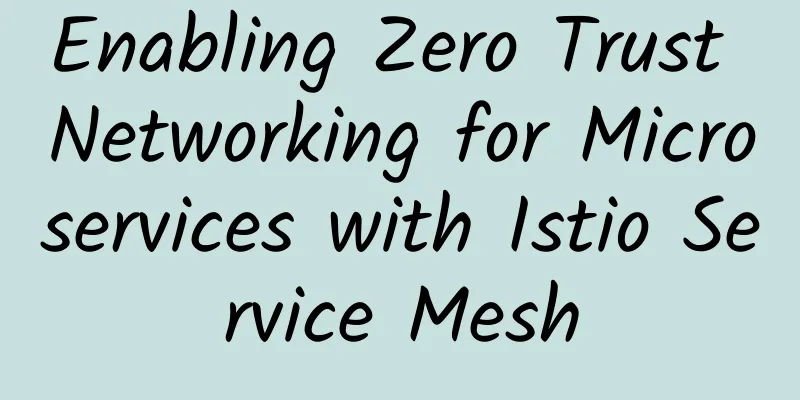5G commercialization promotes the scale development of industrial Internet

|
The Industrial Internet is a network that connects people, data, and machines, and is the foundation for promoting the development of industrial intelligence. 5G has the characteristics of high broadband transmission speed, low-latency wide communication, and mature numerical data collection. It can accelerate the high-level integration of informatization and industrialization and become a booster for the development of the Industrial Internet. Industrial Internet: The Main Battlefield for 5G Commercial Use On June 6, 2019, my country issued 5G commercial licenses, marking the official entry of my country into the 5G era and indicating that my country has the ability to provide 5G commercial services. 5G's characteristics of large connections, low latency, and wide communications are expected to empower all walks of life and promote the development and prosperity of various industries, such as industrial sensors, cloud robots, and cloud VR. For example, in the field of unmanned driving, the development of unmanned driving has put forward requirements for low network latency and service determinism for wireless communication technology. The application scope of wireless communication technology covers vehicle to infrastructure, vehicle to vehicle, and vehicle to pedestrians. 5G networks need to be combined with navigation and positioning technology to allocate transmission bandwidth according to personalized technical indicators, so as to realize unmanned driving functions. In terms of cloud VR/AR, AR/VR can play a key role in the future intelligent production process. In the production, assembly, and maintenance process of intelligent manufacturing, AR technology visualizes production data and displays the production status more clearly and intuitively. Employees can obtain production data and understand the production status by scanning production line equipment with AR equipment, so as to carry out work efficiently. Designers use VR technology to create virtual simulation factories and monitor production conditions in real time in a virtual environment. AR devices need to connect to the cloud through wireless networks and upload information processing functions to the cloud to reduce hardware costs. The combination of 5G and AR/VR can break the limitations of time and space dimensions and further obtain immersive experience. In terms of remote control, for situations such as coal mining, excavation to save lives, and production of hazardous chemicals, the front-end equipment as the controlled party needs to establish an information closed loop with the back-end as the controller. The controlled party sends the perceived environmental scene information to the controller through the communication network. The controller makes decisions based on the received information and issues instructions to the controlled party. The controlled party completes the corresponding operations based on the received instructions. The high reliability and low latency of the 5G network make the operation of the front-end equipment more accurate and more real-time. In addition, although wireless technologies such as Wi-Fi and Bluetooth are used in the industrial Internet, they have problems such as interference and high latency. Therefore, wired networks are often used in the industrial Internet to achieve network stability. The 5G wireless environment can solve the shortcomings of other wireless technologies such as Wi-Fi and Bluetooth, and achieve interconnection between devices with the advantages of high speed, low latency and high reliability, reduce the cost of large-scale use of wired networks by enterprises, and optimize the construction environment. The Industrial Internet requires not only intelligent equipment and machine-to-machine communication (M2M), but also the interconnection of people, machines and data through 5G, breaking the three major boundaries of geography, business and technology to achieve borderless connection. Consumers can trace the origin and manufacturer of products through devices, and even appreciate the production process of products. 5G brings three aspects of support to the development of industrial Internet 5G mobile terminals help the industrial Internet: 5G chips are highly integrated and have strong computing, storage and processing capabilities. They can use cloud computing to increase the functions of terminals, thereby promoting the industrial Internet to produce more functional and powerful applications. Mobile terminals can be developed into mobile phones and VR devices with network communication functions. 5G users and mobile terminals will become the main body of information interaction. Users can implant personalized customization into mobile terminals according to their preferences, continuously enrich the client applications of the industrial Internet, integrate 5G technology with the industrial Internet, and promote the development of the industrial Internet. The high speed, low latency and reliability of 5G technology can help the industrial Internet: The high speed, low latency and reliability of 5G technology can ensure the digital and intelligent development of the industrial system, ensure that all links in the industrial Internet are connected without interruption, and ensure the interconnection between users and industrial equipment, and between equipment. The above characteristics of 5G technology can accelerate the integration of the industrial Internet into the mobile environment. 5G is the technical system of the future mobile Internet, and the key technologies of 5G are mainly non-orthogonal multiple access technology, millimeter wave communication technology, large-scale MIMO antenna technology, and network function virtualization technology, which play a positive role in optimizing the industrial Internet in terms of information transmission quality, anti-interference ability, transmission multiplexing effect, and resource sharing. Therefore, 5G technology can help the industrial Internet integrate into the mobile environment. The Internet of Everything helps the Industrial Internet: The Internet of Everything is the next stage of the development of the Internet of Everything, and it will promote the further development of the Internet of Things in the Industrial Internet. The Internet of Everything connects people, data, machines, and things through the network to achieve seamless connection and transmission of information, creating greater value and richer experience. 5G technology introduces the Internet of Everything into the field of the Industrial Internet, optimizes the application of Internet of Things in the Industrial Internet, and expands the application of Internet of Things to a larger field and scope, creating greater value for the Industrial Internet. 5G commercialization poses three major challenges to the industrial Internet First, the commercial profit model is not clear. At present, the application of 5G in the industrial Internet is different from the traditional C2C and B2B models. 5G network technology needs to provide different network bandwidths and network maintenance services according to specific circumstances in different application scenarios and customized service processes. In addition, the cost of 5G network operation is high, which will change the specific billing model and business model of 5G in the industrial Internet. In the short term, the 5G business model is still unclear. The second is the hidden danger of user privacy leakage. First, the 5G network introduces virtualization technology, which allows users to share resources at the same time. However, since the network boundaries of virtualization technology are not as clear as those of hardware facilities, personal privacy information is within an uncertain protection range, so users' personal privacy information will be more easily stolen. Secondly, compared with 3G and 4G, 5G is not only a single access technology, but also a general term for the integration of various types of wireless access and existing technologies. It is a state of interconnection of all things. Therefore, once the user's data information is uploaded to a certain network node, the entire network system can easily obtain the user's information. Finally, 5G technology is applied to various vertical industries, and the user's identity information, health information, shopping information, etc. may be exposed to any network link at any time, causing personal information leakage. Third, there is a vacuum in legal provisions. Legal norms guide people's behavior, and a complete legal norm system can ensure the normative exercise of user behavior and network behavior. my country has issued the "Cybersecurity Law" to regulate the development order of the network society, but in the context of 5G commercial use, people's demand for the network is personalized and customized, so network technology requires users to provide more accurate information, but my country currently lacks special legislation for the protection of personal information. Other laws and regulations related to personal information and network development were issued before the "Cybersecurity Law", resulting in the problem that laws and regulations are not adapted to the rapid development of 5G networks, and some laws and regulations are in a vacuum. In the current 5G era, information technology is gradually merging with the industrial Internet. Internet technology companies will develop intelligent services beyond existing cognition, and types of personal information that exceed the scope of legal regulations will emerge. At that time, user information that lacks legal regulation will face the risk of being leaked or illegally used. Suggestions on optimizing 5G commercialization and promoting the development of industrial Internet First, explore new business models. Industrial Internet companies and operators under the 5G network model need to strengthen consultation and cooperation, jointly explore new business models, build multi-dimensional billing models for different customized services and different application scenarios, promote the development of the industrial Internet, and increase the revenue of 5G operators. Under the premise of high 5G network service costs, it is necessary to strengthen 5G network resource sharing, reduce the duplication rate of network infrastructure, improve network resource utilization, and concentrate on promoting the efficient development of 5G networks. Second, strengthen the protection of user privacy information. At the network technology level, different application scenarios of 5G networks require different information protection methods. Therefore, it is necessary to build a personalized data information protection model, solve the protection of user privacy information according to local conditions, and use keys, user permissions, and access control functions in a comprehensive manner to ensure that user privacy information is not attacked or leaked during transmission and processing between each network link. At the level of government supervision and social supervision, the government should play a service and regulatory role in the development of the industrial Internet. The government should appropriately participate in the management of the industrial Internet, regulate the behavior of enterprises in obtaining, transmitting, and processing user information, and protect the interests of users. The subjects of social supervision are generally citizens and organizations, but the effect of social supervision in real life is often unsatisfactory. The lack of professional social organizations is an important reason for the poor supervision effect. Therefore, it is necessary to establish social organizations with professional knowledge backgrounds, such as computer industry associations, to strengthen social supervision. Third, improve the laws and regulations on network security management. First, the nature of "personal information" should be clearly defined, the nature of user information in the 5G environment should be clearly defined, and forward-looking research on the application of 5G technology should be strengthened. Secondly, 5G networks are crucial to the development of the industrial Internet, and it is necessary to balance the relationship between user privacy information protection and 5G technology development. We should neither ignore user information protection in order to promote the development of 5G networks, nor hinder the development of 5G networks in order to strictly protect user privacy. Finally, in the process of rapid development of my country's network, a supporting network security legal and regulatory system should be established. Some laws, regulations and policy documents issued before the "Network Security Law" should be appropriately modified according to actual conditions to adapt to the rapidly developing network society. |
<<: How can edge computing win in the context of 5G "new infrastructure"?
>>: When 5G meets new infrastructure, how will edge computing develop?
Recommend
Huawei Cloud builds EI intelligent body to promote the evolution of "inclusive AI"
[51CTO.com original article] There is no doubt th...
Actual measurement: The truth about 5G high-speed downloading: monopoly, speed limit and lies
On June 6, 2019, the Ministry of Industry and the...
Huawei and partners build a "capability-based" ecosystem to accelerate digital transformation in thousands of industries
[51CTO.com original article] From "0 to 1, 1...
spinservers New Year promotion: 10Gbps San Jose/Dallas high-end servers starting from $89/month, instant activation and support for Alipay/WeChat
spinservers has released a promotional coupon cod...
This is probably the most comprehensive article on ICMP.
For the ICMP protocol, you may want to know the f...
Will it be long before US telecom giant AT&T shuts down its 2G network in China?
As 4G networks become more popular, many operator...
FAA announces agreement with AT&T, Verizon to expand C-band 5G signals
The Federal Aviation Administration (FAA) said it...
5 Reasons Why Process Industries Need Low-Power Wide Area Networks
From oil and gas, refineries and chemicals to pha...
Beyond 5G: The next generation of wireless technology is coming
The transition to 5G is still underway, but talk ...
[11.11]80VPS: 50% off all VPS, special VPS annual payment starting from 199 yuan, multiple data centers in Hong Kong/US/Japan/Korea, etc.
80VPS also launched a promotion during the Double...
Ministry of Industry and Information Technology: my country has built nearly 850,000 5G base stations
According to the Ministry of Industry and Informa...
Maxthon Hosting: 54 yuan/month US CN2 GIA-2GB/30G SSD/500GB/Los Angeles Data Center
Aoyoyun is a long-established hosting company, fo...
[Black Friday] HawkHost: Cloud Web Hosting/Semi-Dedicated 70% off, Hong Kong/Los Angeles and other data centers
HawkHost's Black Friday promotion this year i...
In the post-epidemic era, AIOps unleashes new vitality in enterprise operation and maintenance
[51CTO.com original article] 2020 is destined to ...
Results announced! Ruishu Information won the grand prize of "2021 Cybersecurity Outstanding Innovation Achievement Competition"
After the Nanjing Station in August and the Beiji...









